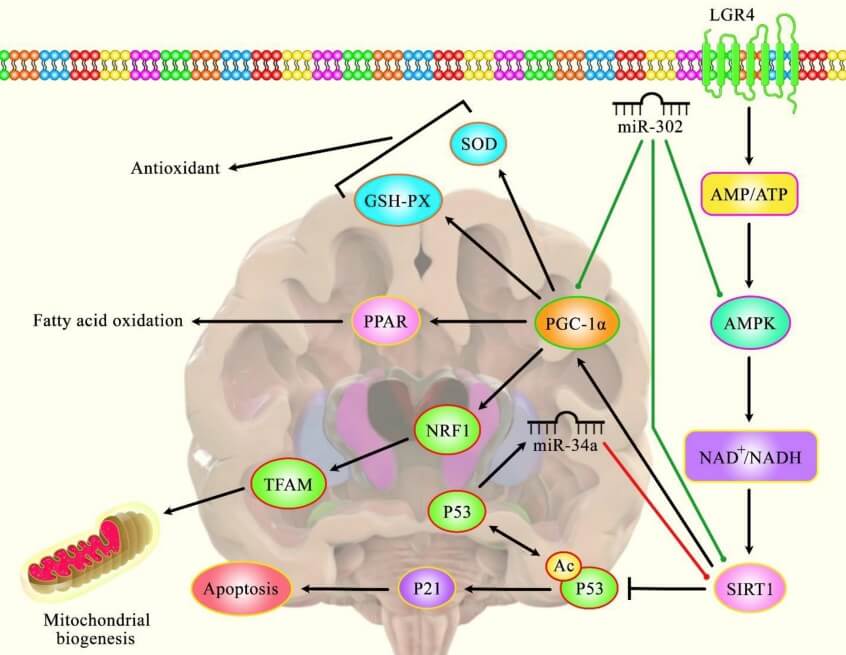The existing rodent models of Huntington's Disease (HD) are valuable tools for revealing its molecular pathology. Despite the considerable progress in our understanding of this disease, there is still no effective treatment that can prevent or slow the pace of HD. As a result, candidate compounds with therapeutic promise continue to be identified and evaluated using proper animal models. Creative Biolabs offers customized contract research using standard HD mouse and rat models (both toxin-induced models and transgenic models) to test the efficacy of novel genetic therapies, biologics and small molecules targeting HD.
Introduction of Huntington's Disease
HD is an invariably fatal neurodegenerative disorder that is resulted from a mutation in the interesting transcript 15 (IT15) gene. The mutation is an expanded trinucleotide repeat (CAG) in exon 1 of the huntingtin (htt) gene, leading to the production of mutant Huntingtin (Htt) protein with an abnormally long polyglutamine repeat. HD is characterized by the progressive deterioration of cognitive and motor functions, and the selective loss of GABAergic medium spiny striatal neurons, as well as glutamatergic cortical neurons that project to the striatum.
 Fig. 1 A schematic diagram of the role of several miRNAs in the modulation of Huntington's disease. 1
Fig. 1 A schematic diagram of the role of several miRNAs in the modulation of Huntington's disease. 1
Overview of HD Models
Findings from animal models have helped not only to elucidate important pathways that are disrupted in HD, to provide important insights into the pathogenesis but also to identify novel approaches to therapy. For mimicking different aspects of HD, multiple species have been used including worms, fruit flies, mice, rats, sheep, and, more recently, pigs and monkeys. The most widely studied models employ rodents and nonhuman primates. These models fall into two broad categories, genetic and non-genetic. Before the discovery of the genetic mutation underlying HD, models of this disease relied on neurotoxin-mediated striatal lesioning. Neurotoxins that are widely used include quinolinic acid (QA), kainic acid (KA), 3-nitropropionic acid (3-NPA), and malonic acid (MA). With the emerging of molecular technologies, a number of genetic approaches have been applied to generate engineered murine models that can simulate the hereditary nature of HD.
Quinolinic Acid-Induced HD Model
QA is an endogenous metabolite of tryptophan at the kynurenine pathway. The induction of HD is typically achieved by intrastriatal administration of QA, leading to body weight reduction motor dysfunction (impaired locomotor activity, rotarod performance, and beam walk test, oxidative damage, and increased TNF-α and IL-6 levels. Features of QA-induced HD model include:
-
QA lesions cause symptoms that often mimic deficits seen in early stages of HD.
-
QA may spare a specific population of striatal neurons that is also spared in HD.
-
It is a well-known experimental model to mimic numerous behavioral, histological, neurochemical, and biochemical events as seen in HD patients.
Genetically Engineered Models of HD
Additionally, Creative Biolabs' genetically engineered mouse model platform has enabled us to provide an extensive range of transgenic and knockout models of neurodegenerative disorders. We can conduct contract efficacy studies in transgenic models such as:
-
R6/2 transgenic mice
-
R6/1 transgenic mice
-
HD-N171-82Q-81 transgenic mice
-
YAC128 transgenic mice
Assessments
The models are accompanied by a number of assessments. Staining with antibodies such as EM48 or S830 allow the visualization of gross change to the Htt inclusion distribution in response to treatment. We can conduct TR-FRET, Seprion assay, or AGERA assays to quantify mutant Htt protein in brain tissues. Brain regional volumes can be measured using MRI. Moreover, we offer behavioral assessment ranging from sensorimotor, learning and memory, to mood swings and we provide consultation on study design to ensure the best practices in the field.
Creative Biolabs is dedicated to improving the understanding of human central nervous system (CNS) disorders and developing effective and efficient therapeutic interventions. Our preclinical service section is one of the most experienced in the world for screening and testing of experimental therapeutics of CNS disorders. Our comprehensive battery of rodent neurological disease models covers:
If you are interested in our services, contact us to discuss your requirements.
Reference
-
Ghafouri-Fard, Soudeh, et al. "The emerging role of long non-coding RNAs, microRNAs, and an accelerated epigenetic age in Huntington's disease." Frontiers in Aging Neuroscience 14 (2022): 987174. Distributed under Open Access license CC BY 4.0, without modification.
For Research Use Only.


 Fig. 1 A schematic diagram of the role of several miRNAs in the modulation of Huntington's disease. 1
Fig. 1 A schematic diagram of the role of several miRNAs in the modulation of Huntington's disease. 1


